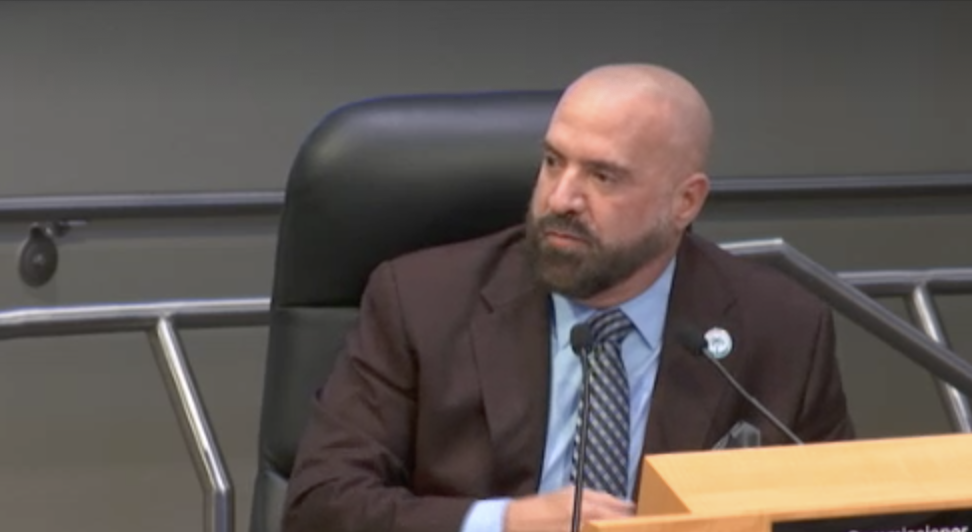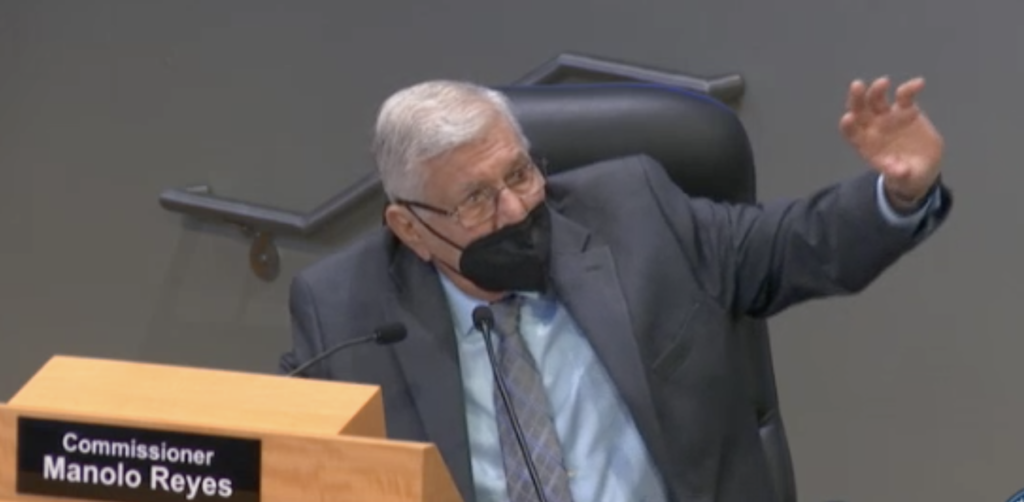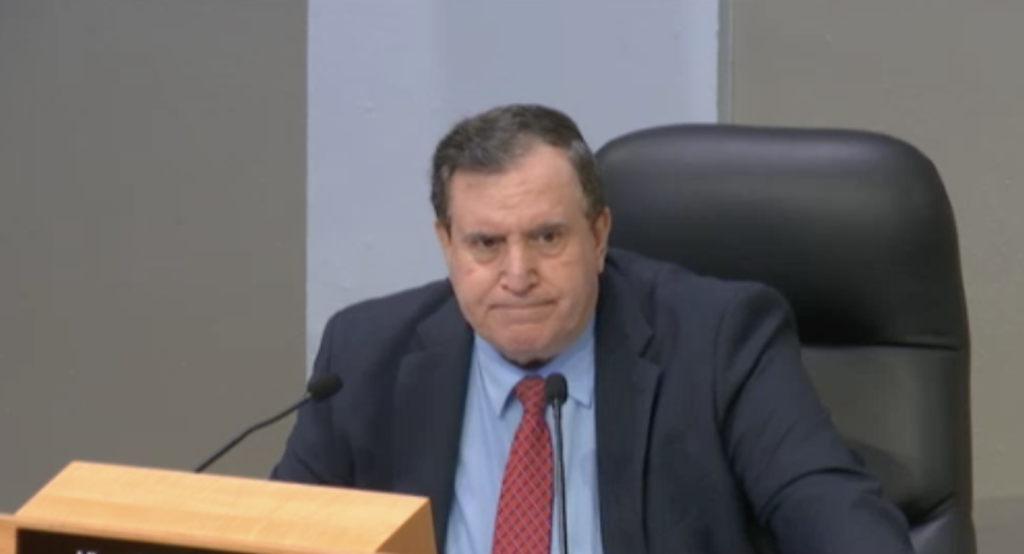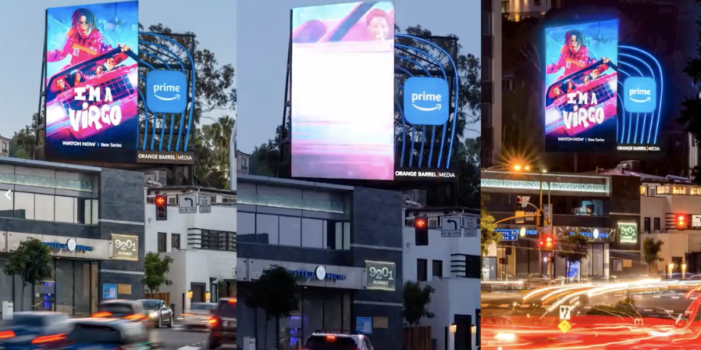After several hours of discussion and passionate public comment, the city of Miami Commission deferred making a decision on the repeal of the ordinances that allow LED billboards on city parks and a moratorium on approving any such signage for 30 days while new rules are adopted.
Basically, they passed the buck to the state, which still has to approve the large sign being erected at the Perez Art Museum Miami in Maurice Ferre Park. Why it is being erected without clearing this hurdle is interesting. Perhaps the sign companies that contributed funds to certain city commissioners’ campaigns also touched state legislators and they’re not worried.
District 2 Commissioner Damian Pardo brought the measure after he got several complaints about the billboard going up at PAMM. The ordinance allowing the sign was passed last year at a time when there was no commissioner in District 2 to represent that community. But this has been a contentious issue for several years. Two Coconut Grove residents supporting the appeal said they’d been speaking against these illuminated signs for more than a decade.
Nathan Kurland, a longtime critic of the billboards, said the sign was illegal because it had originally been turned down for a permit by the Florida Department of Transportation and the company only got PAMM to sign on as the erector to circumvent the reasons they were turned down.
If that is true, then the people need to know how that happened. And we have ourselves a loop hole.

“This does not enhance our city’s beauty,” he said. “These are advertisements everywhere you look. In the sky, on the ground, in the water. This is not about making Miami beautiful. It’s about another company making money.”
Read related: Damian Pardo beats odds, incumbent Miami Commissioner Sabina Covo
Peter Ehrlich said they were “the worst kind of visual pollution” and that four states that depend on tourism had already banned the signs.
PAMM sent a wall of officials to plead for the signs. The chief operating officer, the general counsel, president of the board, even the director of services all came to make the case and convince everyone that this is good for the community.
“Our location is perfect to reach locals and tourists and we’ll have emergency alerts as needed,” Rosenbloom said. Because this is about safety, right?
“We’ve been planning this project for years,” he said, adding that it was “critical” to meeting the museums future budget needs.
Luke Palacios, president of the Board of Trustees, said the sign was 95% complete after a years-long process and due diligence and that this was an “integral” part of the education of our children. Because this is about education, right?
PAMM Director Franklin Sermons said the LED screen would be used to showcase modern art in ways that no other museum could — and that the funds would help support the museum’s 200 or so employees. “Art is food for the soul. But it is not free,” Sermons said. Because this is about jobs, right?
Blah, blah, blah.
The people at the Phil and Patricia Frost Science Museum don’t support the PAMM’s efforts, pitting museum against museum.
“We find ourselves grappling with a concern that touches the very essence of our mission,” said Doug Roberts, president and CEO of the Frost. “These signs, although digital in nature, provide a tangible threat to the guest experience.
They not only detract from the cultural vibe, he said, they actually will hamper the science museum programs.
“These signs produce a lot of light pollution,” he said. When that light bounces off the clouds, it makes stargazing from the museum’s rooftop impossible. “Safeguard the integrity of our campus.”
Residents are overwhelmingly against it.

Commissioner Manolo Reyes is the one who asked for more time. But he also said he agreed with Pardo on the moratorium so that should have passed in the meantime, while they consider carving out an exception for PAMM and the Arsht Center, which also made a case for the signs.
But that is just completely abandoning your obligation as a representative of the people. Who cares what the state does? What if the state approves it? We’re in the same spot as before only the sign, which was allegedly 95% complete, will be up and running.
Commissioner Pardo worried that there will be a rush to pull sign permits by people who will then want to be grandfathered in, which is why the moratorium should have been passed. But he is trying to be collegial. He also withdrew an agenda item — clearly aimed at Commissioner Joe Carollo — to limit the time commissioners could speak on any given agenda item (more on that later).
Read related: LED billboards could buy their way to Miami streets via campaign donations
Carollo was the big defender Thursday of the billboards, but he used the threat of legal liability to try to keep the status quo. Rosenbloom told the commissioners that the sign was expected to provide up to $3 million a year for their operating budget.
“The issue is that the City of Miami officially approved this. We’re going to have liability to the museum, to the companies, to the Arsht Center,” Carollo said, as if he ever worried about legal fees before. “How do you go back without paying the piper.”
General Counsel and senior lobbyist Therese Vento pretty much beat Carollo’s drum.

“Unfortunately, the city seeks to improperly pull the rug out from under PAMM’s feet,” Vento said. She added that the museum “relied on the ordinance” and has spent millions (on a sign?) and already pulled a permit.
“PAMM has a vested interest in the sign tat can’t legally be reversed after the fact,” Vento said, adding that the museum has been a “good neighbor” because the sign is on the northern part of the property, facing I-95, not the condos on Biscayne Boulevard. Eventually, she said, the light will “blend in with the traffic on the adjacent signature bridge.
“What PAMM is asking for is fairness,” Vento said, asking that the ordinance be postponed until it could be amended to have a carve out for PAMM.
Maybe not. Activist Billy Corben, who told everyone he wasn’t getting paid to be there — the commission can’t understand that because they are so “transactional” — reminded everyone that the ordinance for the signs was sponsored by former Commissioner Alex Diaz de la Portilla, who was arrested in September for money laundering, bribery, and a bunch of other crimes, including misuse of campaign funds. ADLP, by the way, got tens of thousands of dollars from the political action committee run by former Commissioner Mark Sarnoff, who represents the city in various cases as an outside counsel and is also the lobbyist for at least one of the sign companies.
About 70% of the PAC funds are from sign companies and the whole process smells a lot like the same shady deal with The Centner Academy that got Diaz de la Portilla arrested, Corben said.
“This is how things get done in the city of Miami.”
Maybe not anymore.
If you like this story and want to read more coverage of the city of Miami shenanigans, please consider making a donation to Political Cortadito. Independent watchdog journalism can make a difference.

